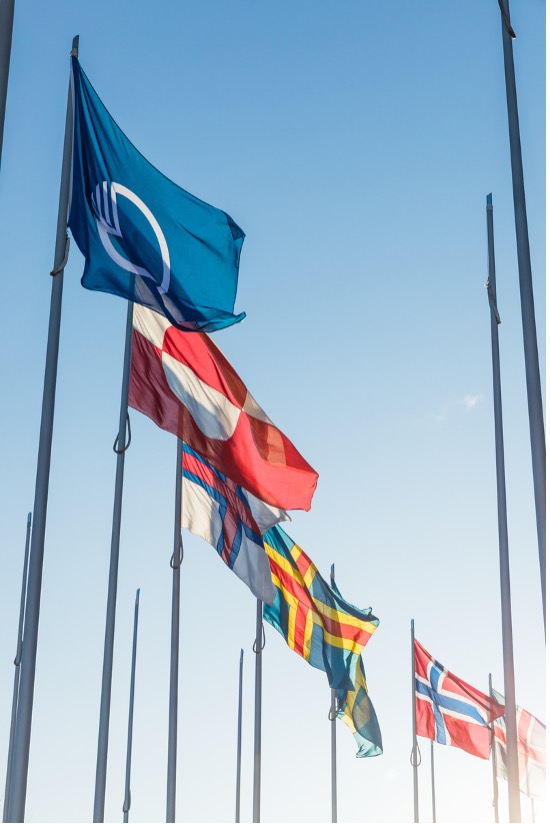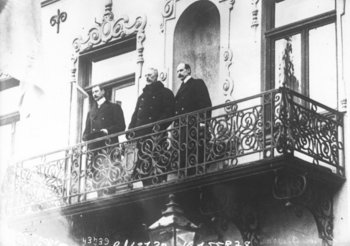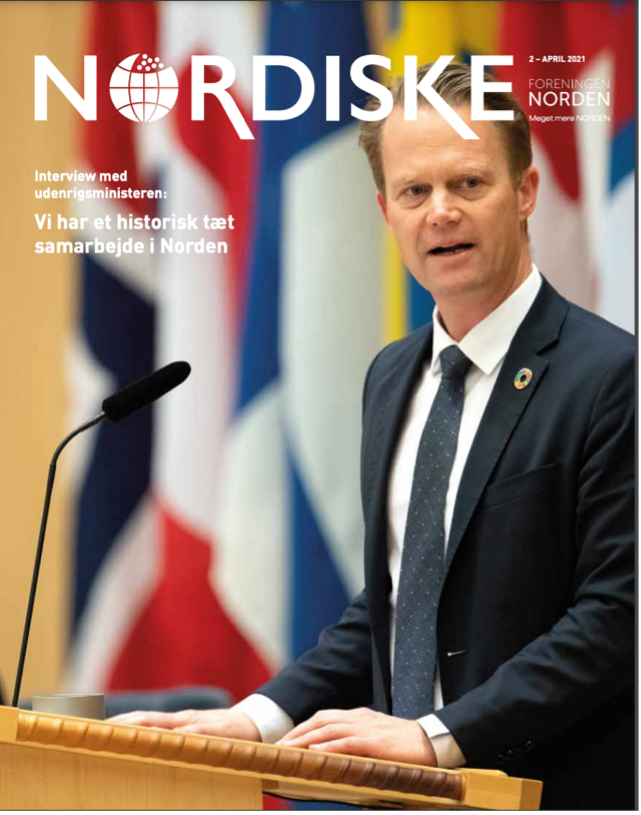Nordism
Nordism refers to the act of promoting Nordic cooperation as well as supporting a common Nordic identity. First appearing in the 1920s, it does not traditionally include the idea of a united Nordic federal state, unlike the earlier Scandinavism movement (with respect to Denmark, Norway and Sweden). The vision of cooperation between the five Nordic countries and the fostering of mutual understanding, respect and friendship lives on today, and can be found in the work of the Nordic Council and the Norden Associations, for example. However, there are still some proponents of closer amalgamation and even those who support the idea of a Nordic federal state, echoing the Scandinavism of over a century ago.

Nordism is the 20th century ideological redefinition of Scandinavism (or Scandinavianism), and refers to the act of both promoting Nordic cooperation and supporting a common Nordic identity. The term ‘nordist’ refers to a person sympathetic to Nordism who actively promotes it. Nordism as a phenomenon first appeared after the First World War when a new form of Nordic cooperation was gradually established to substitute the pan-nationalist Scandinavism movement. By the end of the Second Word War, Nordism became an established term among enthusiasts of Nordic cooperation. Nordism is based on respecting the sovereignty of each Nordic national state and does not traditionally include any idea of a united Nordic federal state or kingdom. It is rather a vision of cooperation between independent Nordic countries, and more generally the active promotion of knowledge about the different Nordic countries among each other.
From Scandinavism to Nordism
The gradual failure of political Scandinavism in the late 19th century was a process which started with the Danish defeat to Prussia and Austria in 1864 and culminated in the break-up of the Swedish-Norwegian Union in 1905.
The outbreak of the First World War began to normalise relations between the three Scandinavian kingdoms who jointly declared their neutrality as an act of Nordic cooperative solidarity. This was the result of the well-known ‘Three Kings’ meeting’ held in December 1914 in Malmö.

PICTURE: The meeting of the three Scandinavian kings (King Haakon VII of Norway, King Gustav V of Sweden, and King Christian X of Denmark) in Malmö, Sweden, in December 1914 was an historic event where the three countries consolidated their neutral approach to the German aggression on their doorstep.
Three years later a similar meeting between the three Scandinavian foreign ministers resulted in an exchange of goods in order to relieve the shortages caused by the First World War. Even if the exchange of goods did not develop into a peace-time customs union, strong lobbying groups kept the idea of deeper Nordic cooperation alive. The foundation of three separate national Norden Associations in 1919 was the most visible action, and these became important forums for developing the practice and ideas of Nordism.
In 1922 and 1924 respectively, similar associations were established in Iceland and in Finland. The original plan introduced by Swedish and Danish supporters of the cause, namely, to have just one association, was opposed by the Norwegians. They saw the proposal of a joint association as a potential threat to the principle of respecting national sovereignty and introducing what was dubbed ‘amalgamism’. This is very illustrative of the principles on which Nordism was based, i.e. while the focus was on the region, absolute respect for national sovereignty was to be upheld.
A continuum: mutual understanding to full amalgamation
Within the Norden Associations (Föreningarna Norden) an often fierce debate took place on how Nordic cooperation should be conducted and what the new Nordism should stand for. These debates emerged right at the start in 1919 and are still going on today. Those who supported a more far-reaching integration agreed with the same ideology as 19th century Scandinavism, urging strong measures to be put in place by the respective governments in order to lower barriers and borders, and promote a unified Nordic common market, defence policy, social legislation and identity.
Those who represented a more restricted vision saw the nature of Nordic cooperation predominantly in the non-governmental associational life. Here, the main task was seen as disseminating knowledge about the respective Nordic countries to fellow Nordic citizens, and thus fostering mutual understanding, respect and friendship. However, this all had to be conducted under a strictly national framework, avoiding all promotion of a deeper ‘amalgamation’. The restricted view was initially almost exclusively Norwegian, primarily stemming from concerns over Swedish neo-imperialism - with the memory of the Swedish-Norwegian union still fresh.

PICTURE: Front cover of The Norden Association's magazine called “NORDISKE” (NORDIC) displaying Danish Foreign Minister Jeppe Kofoed (edition from 2nd April 2021). Permission kindly given from Foreningen Norden.
New ideologies
As the term ‘Nordism’ appeared when Finland and Iceland joined the forums of Nordic cooperation in the 1920s, the term also began to be associated with the geographical enlargement of the traditional pan-Scandinavian sphere of cooperation and the ideology of pan-nationalism. What had started as the closer unity of three kingdoms became the vision of five nation states trusting each other in cooperation.
As an ideological concept Nordism was used alongside the older ‘Scandinavism’ during the inter-war period. By the early 1930s it had already established itself as a common denominator for people identifying themselves with the Nordic cause. To proclaim oneself a ‘nordist’ became an integral part of Nordic cooperative culture after the Second World War, a period that saw the emergence of the official Nordic cooperation in the form of the Nordic Council, founded in 1952.
While Nordism today is a firmly established concept among the inner circles of Nordic cooperation, it can also include the promotion of traditionally radical pan-national visions, blurring the initial separation of Scandinavism and Nordism from the early 20th century. Today, some self-proclaimed nordists openly support the vision of a future Nordic federal state, which in essence strongly resembles the 19th century Scandinavist idea.
Further reading:
- Franz Wendt, Cooperation in Nordic Countries: Achievements and Obstacles (Stockholm: Almqvist & Wiksell, 1981).
- Ruth Hemstad, “Scandinavianism, Nordic co-operation, and ‘Nordic democracy’”, in Jussi Kurunmäki and Johan Strang, eds., Rhetorics of Nordic Democracy (The Finnish Society of Science and Letters: 2010), pp. 179-193.
- Monika Janfelt, Att leva i bästa världar: Föreningarna Nordens syn på Norden 1919-1933 [Living in the best worlds: Norden Associations' view of the Nordic region 1919-1933] (Stockholm: Carlsson, 2005).
Links:
- The Norden Association (Foreningen Norden)